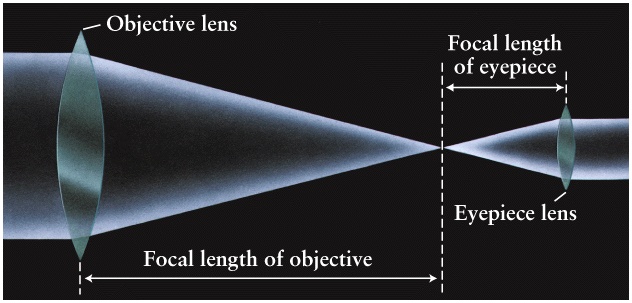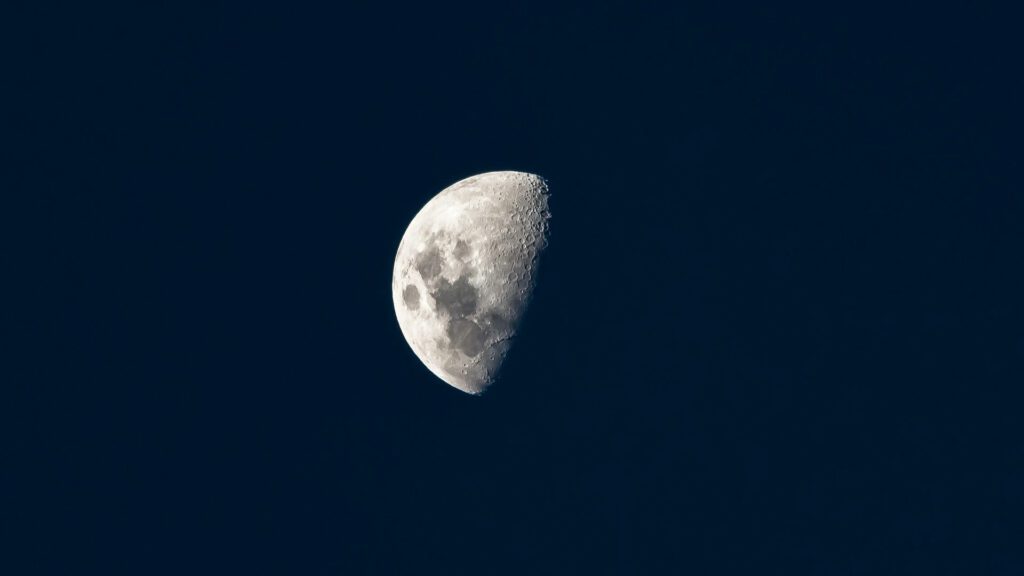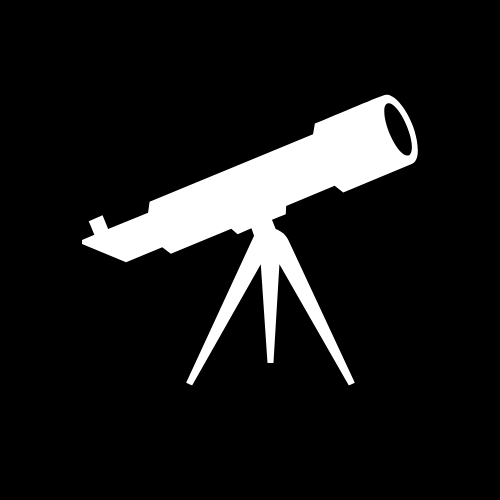Understanding focal length
Understanding focal length is one of the most important concepts when it comes to selecting a commercial telescope for astronomy. It is a key factor in determining the telescope’s magnification, field of view, and overall performance. In this article, we will explore what focal length is, how it affects the performance of different types of telescopes, and how to choose the right focal length for your needs.

What is focal length?
The focal length of a telescope is the distance from the lens or mirror to the point where the light that has passed through the lens or been reflected by the mirror converges to form an image. It is often expressed in millimeters and is one of the key factors that determine the magnification of a telescope. The longer the focal length, the higher the magnification, and the narrower the field of view. The shorter the focal length, the lower the magnification and the wider the field of view.
How does focal length affect the performance of different types of telescopes?
Refracting telescopes: Refracting telescopes, also known as refractors, use a lens to focus the light. The focal length of a refractor is determined by the shape and size of the lens. It is a fixed value that cannot be changed. Refractors are known for their sharp and clear images. Their long focal lengths make them ideal for high magnification observations of the moon, planets, and other small celestial objects. However, they tend to be more expensive and more cumbersome than other types of telescopes. This makes them less suitable for wide-field observations.
Reflecting telescopes: Reflecting telescopes, also known as reflectors, use a mirror to focus the light. The focal length of a reflector can be changed by adjusting the position of the mirror. This makes reflectors more versatile than refractors. Reflectors are typically more affordable than refractors and are well suited for wide-field observations of large celestial objects such as galaxies, nebulae, and star clusters. However, they are less suitable for high magnification observations due to their shorter focal lengths.
Catadioptric telescopes. Catadioptric telescopes are a combination of refractors and reflectors and use both lenses and mirrors to focus the light. The focal length of a catadioptric telescope is typically adjustable, making them more versatile than either refractors or reflectors. Catadioptric telescopes are known for their compact size and portability. Making them ideal for both high magnification observations and wide-field observations.
Concept of focal length in telescopes
| Aspect | Description | Impact on Imaging |
|---|---|---|
| Definition of Focal Length | Distance between the lens/mirror and the focal point. | Determines the field of view and magnification. |
| Short vs. Long Focal Length | Short focal lengths yield wider views; long focal lengths offer narrow, magnified views. | Short focal lengths are better for wide-field, deep-sky objects; long focal lengths are ideal for detailed observations of planets and the Moon. |
| Focal Ratio | Ratio of the telescope’s focal length to its aperture. | Affects the brightness of the image and exposure times in astrophotography. |
| Focal Length and Eyepieces | How focal length interacts with different eyepieces. | Determines the magnification with each eyepiece. |
| Focal Extenders/Reducers | Use of Barlow lenses (extenders) or focal reducers. | Barlow lenses increase, while reducers decrease the effective focal length, altering magnification and field of view. |
| Practical Applications | Choosing the right focal length for specific observations. | Guides in selecting the most suitable telescope for various astronomical interests. |
How to choose the right focal length for your needs
When choosing a commercial telescope, consider your observing goals and the types of celestial objects you are interested in. If you are interested in observing the moon or planets, a refractor with a long focal length is a good choice. If you are interested in observing galaxies, nebulae, and star clusters, a reflector or a catadioptric telescope with a shorter focal length is a better choice.
It is also important to consider the size of your telescope. A longer focal length means that the telescope will be larger and more cumbersome, while a shorter focal length means that the telescope will be more compact and portable. If you plan to use your telescope primarily at home, a larger telescope with a longer focal length may be a good choice. If you plan to take your telescope on the go, a compact and portable telescope with a shorter focal length may be a better choice.

Focal length and magnification
Focal length and magnification are related . The magnification of a telescope is determined by dividing the telescope’s focal length by the eyepiece’s focal length. For example, if a telescope has a focal length of 1000mm and an eyepiece with a focal length of 10mm is used, the resulting magnification would be 100x (1000mm / 10mm = 100x). This means that a telescope with a longer focal length will provide higher magnification when paired with an eyepiece of the appropriate focal length. However, as mentioned earlier, high magnification alone does not necessarily result in a better image quality.
The overall image quality depends on various other factors, including the telescope’s optics, atmospheric conditions, and observing techniques. In summary, the relationship between focal length and magnification is straightforward: magnification is determined by dividing the telescope’s focal length by the eyepiece’s focal length. However, selecting the right combination of focal lengths is just one aspect of achieving optimal observing conditions with a telescope.
Focal length and aperture
Focal length and aperture are two critical factors that determine a telescope’s performance and capabilities. The relationship between them is straightforward: a telescope’s aperture affects its focal length and, in turn, its magnifying power. Aperture refers to the diameter of the telescope’s primary lens or mirror. This determines how much light the telescope can gather. A larger aperture allows more light to enter the telescope, resulting in brighter and more detailed images.
A larger aperture also means a longer focal length is required to focus the incoming light to form an image. Therefore, telescopes with larger apertures typically have longer focal lengths, which result in higher magnification capabilities. The tradeoff is that telescopes with longer focal lengths also have narrower fields of view. This makes it more challenging to find and track objects in the sky. Additionally, the size of the aperture affects the telescope’s resolving power, which is its ability to distinguish fine details and separate close objects. A larger aperture provides better resolving power, allowing more detail to be seen in the observed objects.
The relationship between focal length and aperture is that a telescope’s aperture affects its focal length, and in turn, its magnifying power. Telescopes with larger apertures typically have longer focal lengths and higher magnification capabilities but narrower fields of view. The aperture also affects the telescope’s resolving power, with larger apertures providing better resolving power and allowing more detail to be seen in observed objects. When selecting a telescope, both focal length and aperture should be considered to determine the telescope’s capabilities and limitations.
The mount
The mount of the telescope is also important, as it determines how stable the telescope is during observations. A good mount will keep the telescope steady and allow you to easily track objects as they move across the sky. There are several types of mounts available, including altazimuth and equatorial mounts, and each has its own advantages and disadvantages.
The eyepiece
It is also important to consider the eyepiece options that are available with the telescope. Eyepieces are the lenses that you look through to observe the sky. The type and quality of the eyepieces that come with your telescope will greatly affect your overall observing experience. Some telescopes come with multiple eyepieces, allowing you to change the magnification as needed, while others only come with one or two eyepieces.
In conclusion, understanding focal length is just one aspect of choosing the right commercial telescope for your needs. When selecting a telescope, it is important to consider a variety of technical specifications, including aperture, mount, and eyepiece options, in order to make an informed decision. Whether you are a beginner or an experienced astronomer, taking the time to research and understand these technical specifications will help you select a telescope that will provide you with many years of enjoyable observing.
Conclusion
In summary, understanding focal length is crucial in the world of astronomy and photography, as it directly influences the field of view and magnification of images. Whether you’re a beginner or an experienced observer, knowing how to manipulate and work with different focal lengths can significantly enhance your observational or photographic experience. By choosing the right equipment and employing the use of focal extenders or reducers as needed, you can explore a wide range of celestial objects with clarity and precision, making the most out of your telescopic or photographic endeavors.
FAQ Section for “Understanding Focal Length”
What is Focal Length in a Telescope?
Focal length is the distance between the telescope’s lens or mirror and the point where light rays converge to form a sharp image.
How Does Focal Length Affect Magnification?
The magnification of a telescope is determined by dividing its focal length by the focal length of the eyepiece used.
Why is Focal Ratio Important?
The focal ratio (focal length divided by aperture) affects the brightness and width of the field of view in the telescope.
Can the Focal Length Be Adjusted?
While the focal length is a fixed property of the telescope, it can be effectively altered using Barlow lenses or focal reducers.
What is a Good Focal Length for Beginners?
For beginners, a moderate focal length (around 600mm to 900mm) is versatile for both planetary and deep-sky observing.
Is a Longer or Shorter Focal Length Better?
It depends on your observing interests: shorter focal lengths are better for wide-field views, and longer focal lengths are better for detailed, close-up views.
How Do I Choose the Right Eyepiece for My Telescope’s Focal Length?
The choice depends on the desired magnification. Lower magnification (wider field of view) requires an eyepiece with a longer focal length, and higher magnification requires a shorter focal length eyepiece.
